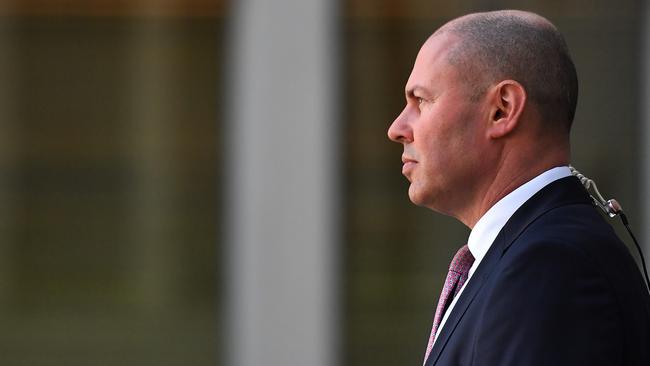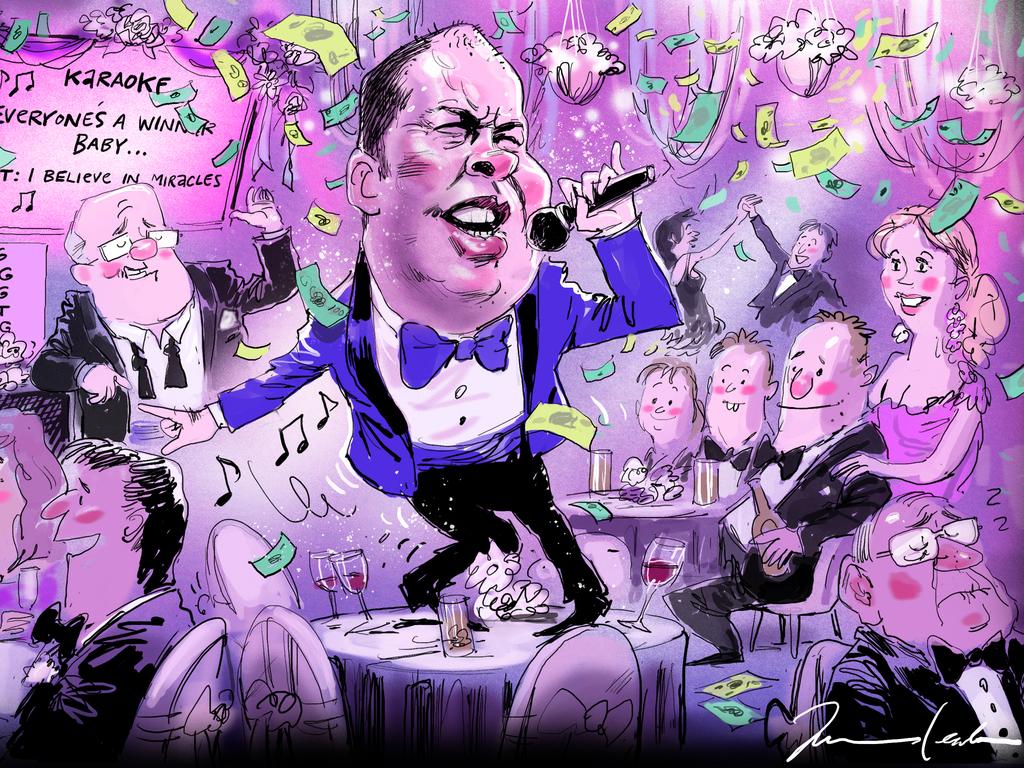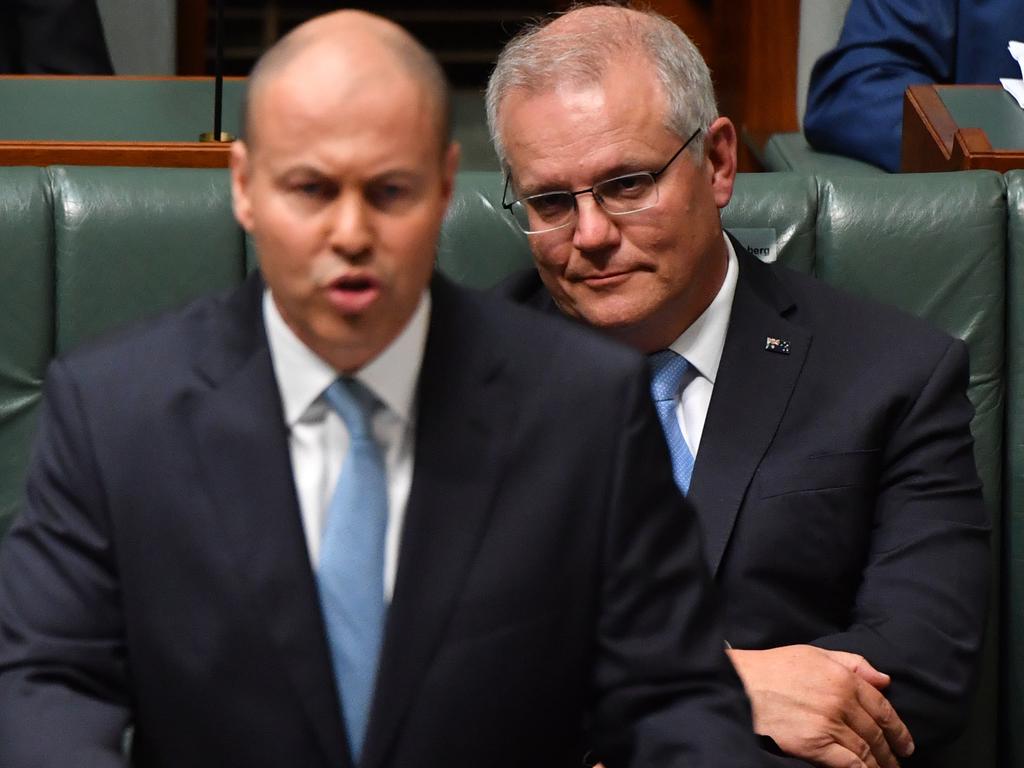Budget 2021: Economy roaring out of Covid abyss, at heavy cost

While warding off the worst ravages of recession, helping businesses survive and get back on their feet despite closed international borders and unnecessary state lockdowns, the government’s growth strategy, in boosting company profits — along with a surge in iron ore royalties — has contained the COVID-induced deficit. It will reach $161bn this year, $52.7bn lower than forecast just more than six months ago.
That said, the budget represents missed opportunities when billions of dollars are in play. Businesses have used the challenges created by the pandemic to reform their operations. Not so the government. It has shied away from vital structural reforms the economy needs. It is worth asking: for all the billions of dollars spent, prolonged deficits and debt incurred, how does the budget set up Australia for the future? Building on last year’s infrastructure announcements, new projects that will boost productivity are limited. Amid our worsening strategic outlook, there is no new major defence initiative beyond what is in place. Company and personal tax reforms have been kicked down the road again. Despite the Coalition’s commitment to smaller government, the top 20 per cent of taxpayers will continue paying 63 per cent of income tax revenue; the top 5 per cent will pay 35 per cent.
Tax relief is limited and short term. Low and middle-income earners will receive a tax cut stimulus of up to $1080. What has changed most noticeably is the escalation in social, recurrent spending. Improvements in aged care, mental health, diagnostics, medications on the Pharmaceutical Benefits Scheme and the National Disability Insurance Scheme are all beneficial. But once baked in, high recurrent spending is almost impossible to cut without paying a steep political price. It also opens up the prospect of a race-to-the-bottom spending war between the major parties during the coming election.
Those are the negatives. On the positive side, the budget continues the government’s successful strategy of empowering the private sector to lead economic recovery. Recognising that the pandemic is not over, Mr Frydenberg sensibly announced that “for as long as the virus persists, so will we” in pursuing measures to encourage business development and jobs. We particularly welcome the extension of investment incentives until June 30, 2023, “so a tradie can buy a new ute, a farmer a new harvester and a manufacturer expand their production line”.
For the next two years more than 99 per cent of businesses, which together employ more than 11 million workers, can write off the full value of any eligible asset. That strategy has already helped fill order books. Spending on machinery and equipment has increased at its fastest rate in nearly seven years. Investing in 450,000 new training places for young people and other jobseekers, new apprenticeships and traineeships, STEM scholarships, university short courses boosting childcare, and a program to encourage Indigenous girls to finish school and find work is also money well spent.
Not only is a job the best form of welfare, the economy needs more skilled workers, especially while the pandemic has caused immigration to grind to a halt.
Mr Frydenberg’s feat in bringing us through the economic fallout of COVID has been herculean. But in what is clearly an election budget, he and the Prime Minister have revealed a strong appetite for spending at levels that will not be sustainable long term. Our recovery has come at a “significant and unavoidable cost”, as Mr Frydenberg told parliament. There is no disguising our growing debt burden. Net debt will grow to $617.5bn or 30 per cent of GDP this year and peak at $980.6bn or 40.9 per cent of GDP in June 2025. This is low by world standards, as he says. As a share of the economy, it is around half the level of Britain and the US and less than a third of Japan’s level. This is not the time for austerity. But when the time for reckoning does arrive, it will lay a heavy burden on younger workers and future generations as workers and business will be called on to support a growing proportion of retirees.
Treasury’s intergenerational reports, started by Peter Costello, have warned of that reality for years. Given the uncertainties of the coronavirus, the government must also factor in the capacity to launch another major rescue effort in the ghastly event of another pandemic.
Our nation’s prosperity, as so often in the past, remains inextricably linked to the performance of the resources sector and our terms of trade. The budget papers predict that based on industry advice, “iron ore prices could remain elevated for an extended period” and “a stronger recovery in steel production outside of China could also provide further support for iron ore and metallurgical coal prices”. Movements in commodity prices can have significant effects on nominal GDP and federal government tax revenue, the budget papers acknowledge. The case for saving and investing a healthy share of the bounty of the resources boom remains compelling — The Australian has supported that strategy through boom and bust cycles for years.
While highly populist, the merits of putting taxpayers’ money on the line to boost the soaring property sector is questionable. Provided it does not trigger a bidding war with Labor, such largesse will stand the government in good stead among first and aspiring home buyers. Across time, however, such interventions distort markets, setting up some investors for losses when handouts and special measures stop. Allowing buyers to dip deeper into their superannuation contributions also comes at a price of eroding independent retirement savings long term. The “bank of Mum and Dad” — in which parents use equity in their own homes to help their adult children on to the property ladder, in a joint purchase or by going guarantor — is far preferable to state support. Vital as they are for vulnerable Australians’ quality of life, improvements in aged care and the NDIS will require substantial increases in revenue in coming years. Following the Royal Commission into Aged Care Quality and Safety’s shameful findings of widespread neglect and abuse of the elderly, it is no surprise that spending in that sector is one of the budget’s big-ticket items. New funding of $17.7bn will bring investment in the system to $119bn during the next four years. The provision of another 80,000 home care packages, bringing the total to 275,000, is especially important.
Older Australians have a strong preference to stay in their homes amid familiar surroundings and communities. The extent to which that option could be expanded through an appropriate degree of user-pays needs to be investigated as the population continues to age. Increasing the time nurses and carers will spend with residents in aged-care facilities will be welcomed by those living in care and their families. So will the provision of increased respite care, personal carers and better regulation. Finding staff to meet the sector’s needs will be a problem.
Confidence matters. As Mr Frydenberg noted, consumer sentiment is at its most buoyant in 11 years. The confidence of individuals, families and businesses to spend will be vital in propelling the next phase of recovery. Mr Morrison and Mr Frydenberg have made their mark with their stewardship during this once-in-a-century pandemic. Beyond short-term recovery, which they have steered with foresight and expertise, we would like to see them apply their vision to longer-term reforms. Doing so would benefit generations of Australians and elevate Mr Morrison and Mr Frydenberg to the stratosphere of top prime ministers and treasurers. So far so good. But much remains to be done.






Far from the “economic Armageddon” some officials and pundits warned about last year, the snapshot of the nation presented in Josh Frydenberg’s third budget is highly encouraging. We are still the Lucky Country compared with most of the world, most of all in avoiding the loss of life that has ripped the heart out of so many nations. In his budget that had been postponed to last October because of COVID-19, the Treasurer called forth the power of aspiration, pursuing a business growth strategy as an antidote to recession. He, Scott Morrison and the government have been vindicated. Employment in Australia has grown to above pre-pandemic levels. At 5.6 per cent, unemployment is lower than when the Coalition came to office. Expectations in last year’s budget have been exceeded. And the goal in this budget is to create an additional 250,000 jobs by the end of 2022-23. A year ago Treasury feared unemployment could reach 15 per cent and the economy could contract by 20 per cent. This would have left two million Australians unemployed, the equivalent of losing the agriculture, construction and mining sectors. Australia contracted during the pandemic by 2.5 per cent. Britain, France and Italy all contracted by more than 8 per cent; Japan and Canada by 5 per cent. Our economy is forecast to end 2020-21 with growth of 1.25 per cent, rising to 4.25 per cent next financial year. More than $50bn in new stimulus payments and funding for key services will help offset population stagnation, closed borders and lack of immigration. We need a baby boom as well as a resources boom. “Australia’s economic engine is roaring back to life,” Mr Frydenberg says. It is concerning, however, that Treasury forecasts GDP growth in each of the three “out years” of the forward estimates will be, at best, only 2.5 per cent.